
Our wallets have been hit really hard this year. Rising fuel, food, and housing costs mean we have to make different decisions about where and how we want to spend our money. But it doesn't mean we can't still eat well.
This is where batch cooking (or freezer meal prep) can help. Cooking more food at home instead of buying pre-made and eating out less can save you a lot of money. And by freezing your food you extend the shelf life of it so that you can enjoy it for longer before it spoils.
What is Batch Cooking or Freezer Meal Prep?
When people think of meal prep, they often think of cooking once a week (maybe on a Sunday) and portioning out their food for the week in the refrigerator. This is a great way to save time and money if you consistently eat all of your planned meals. However, for people who want more variety in their meals, the might get sick of the same meal by day 3 and will opt to buy something instead. When this happens, it can result in potentially losing the savings from making your own meals because you're not only buying food outside, but also throwing away your own home-cooked meal if you don't consume it within the week.
This is where batch cooking or freezer meal prep comes in. Instead of cooking for the week and refrigerating your food, you make a larger batch of food and freeze it to enjoy for later.
Traditionally, people will freeze their food in miscellaneous food storage containers they have around the house or in plastic single-use zip top bags. The issue with these methods is that they often require you to freeze in a portion that might not make sense, resulting in you thawing and reheating much more food that you want. Freezing food in individual portions will help you save time, save money, and reduce food waste. Reheat the exact amount you need and keep the rest in the freezer to enjoy for another day.
The best way to freeze food in portioned amounts is with Souper Cubes. Our sturdy silicone trays are designed to freeze food in perfect portions. Whether you want to freeze leftover tomato paste in 2 Tbsp portions or leftover casseroles in 2-cup portions, Souper Cubes has the tray for you. And with Souper Cubes, you don't have to eat the same meal over and over again. It'll take a little time to build up your freezer stash but before you know it, you'll be shopping from your freezer instead of the grocery store...or reaching for your phone to order takeout.
Cost Comparison

You can save money cooking basics and complete meals at home. For example, making homemade chicken broth is not only a way to use the bones from your roast chicken again for another purpose, but the broth tastes so much better than store-bought AND you'll be saving money.
Here's the cost breakdown:
- A typical raw organic chicken is 4 pounds and costs about $16. From a 4 pound chicken, you'll get approximately 2½ pounds of meat, or 6 6-ounce servings and you'll also make 12 cups of broth.
- 12 cups of broth = 3 cartons of purchased broth, which costs $15 ($5 average per carton of organic broth)
- That means you'll have 6 servings of meat and homemade broth for about the same price as just the purchased broth.
- Plus, you get to control the amount of salt in the broth and on the chicken. Typically, grocery store roast chickens are very high in sodium and you can't always find no-salt-added chicken broth.
- And even better, homemade broth tastes A LOT better than store-bought. I promise.
Budget-Friendly Ingredients

Saving money means spending less money in the long run, not just in the moment. Pick up pantry ingredients that you know you'll use only when they're on sale like canned tomatoes, canned beans, and dried pasta. Here are a few other tips for saving money on groceries:
- Stick to a predominantly vegetarian recipe and use produce in season - it will often be fresher, more flavorful, and priced lower. And don't forget about the freezer aisle. Frozen vegetables are extremely handy to keep on hand as they won't go bad in your produce drawer.
- Minimize the use of meat. Meat is expensive. If you want to include meat, try to either use a tougher cut (that’s typically cheaper) and shred it. Kate Strickler (from Naptime Kitchen) often shares how when you shred meat, it magically appears to stretch twice as much as if you would have served it whole or diced. Another option is to buy a whole bird and either butcher it yourself or buy a rotisserie chicken. If you have a Costco membership, their cooked rotisserie chicken is $5 and is often cheaper than buying a raw chicken. You can shred it up to use in various soups, salads, casseroles, and enchiladas or burritos and then make a stock out of the carcass.
- Buy in bulk but only when it makes sense. Focus on shelf-stable items you know you’ll use and won’t expire instead of perishable items that may seem like a good deal but it'll be hard to get through it all before it goes bad. Dried beans and lentils are often low cost, filling, and packed with nutrition. They’re an easy way to stretch a meal.
- Soups are your friend. They're an easy way to make a filling meal from all the bits and pieces you have left in your fridge or freezer. One of my favorites is this Clean-Out-the-Fridge Vegetable Soup.
Batch Cooking

Cooking small portions of food can often be more expensive than freezing large portions of food and freezing the leftovers. Often, recipes don’t call for an entire can or carton, or maybe only need some veggies but they come in a larger pack. Instead of making a small portion for just a few servings, make a bigger portion knowing you’ll freeze the leftovers.
There are two common ways to batch cook:
- Double your favorite freezer-friendly recipe. Aren’t sure which recipes freeze well? Then check out this ultimate freezer guide for best tips regarding what foods freeze well and which ones don’t. The benefit of doubling your favorite freezer-friendly meal is that you know you’ll love it and be more likely to grab it from the freezer when you’re hungry.
- Search for batch-friendly recipes. There are lots of blogs, cookbooks, and sites that are specifically designed to help people cook larger batches of food. While this is awesome, be careful to review the ingredients and any reviews. You want to avoid using a lot of produce to create a dish you might not like. When in doubt, it’s better to start small, confirm you like the dish, and then make a bigger portion next time.
Budget-Friendly Dishes that are Freezer-Friendly
Generally speaking, the more whole foods and fewer already prepared ingredients you use, the more potential there is to save money. Of course, this might vary from town to town depending on what you have access to but cooking seasonally instead when produce is less expensive and freezing it will save you money overall. For instance, picking up green beans when they're on sale and making casseroles and freezing them means you can enjoy green beans for months.
Here are some additional ideas for inexpensive meals that freeze beautifully.
Breakfast Ideas

- Steel-Cut Oatmeal
- Freezer Bean & Cheese Burritos
- Breakfast Potatoes
- Mini Crustless Breakfast Quiches
Lunch and Dinner Ideas

- Lentil Soup
- Potato Leek Soup
- Mushroom Squash Soup
- Instant Pot Vegetable Soup
- Mushroom Barley Soup
- Coconut Curry Butternut Squash
- Chicken Tortilla Soup
- Vegetarian Chili
- Mexican Style Brown Rice with Beans
Reusing Leftovers

As a kid, leftover food was the last thing I wanted but now I'm thrilled when I see that there is food leftover for me to eat for lunch, or to use again in my next meal. Here are a few ways to use leftovers to make another delicious dish:
- Leftover Grains. You can freeze leftover grains, like rice, farro, and barley in 1/2-cup or 1-cup portions in your Souper Cubes. Reheat them plain to serve with a future meal or use them for grain salads or casseroles, to stir into soup, or for fried rice.
- Leftover Roasted Veggies. Roasted vegetables, like Brussels sprouts, butternut squash, potatoes, and cauliflower, can be frozen for use in soups, ramen or grain bowl toppings, or for sandwiches.
- Leftover Meat. Cut or shred leftover meat into bite-sized pieces and freeze if for future use in casseroles, soups (like the Chicken Tortilla Soup shown above), sandwiches or grain bowls. And if there are bones, don't forget you can freeze those too for homemade broth if you aren't ready to make the broth yet or you want to wait until you have enough bones for a full batch.
Shelf Life for Frozen Food

The USDA recommends freezing most cooked foods within 4 days. Once frozen, food is essentially safe in the freezer indefinitely. Though the quality and taste of the food can reduce over time if it has been exposed to air or if the freezer fluctuated in temperature and warmed up. We try to eat our frozen meals within 4-6 months of cooking them. For foods we want to store for the entire year, we will often freeze them in Souper Cubes first and then vacuum seal the frozen cubes. This reduces any chance of freezer burn that can impact the taste of the dish. Freezer burn food is safe to eat, just less delicious.
Happy Customers
Don't just take our word. Here are real reviews from real people.
Great way to stretch the food budget!
When cooking meals, I make extra and freeze in my Souper Cubes. This past week I saved $ by using a few of the frozen cubes for lunches. A family member was sick and I was able to put together a care package of several meals by sharing frozen cubes. Not only did I save money but time! These will make great gifts. - Linda
Such a brilliant product!
Perfect
Souper cubes trays - best investment!!
Are you ready to batch cook on a budget? If so, be sure to pick up a set of Souper Cubes tray. Not sure which one is the right size for you? Contact us and we'd be happy to help.


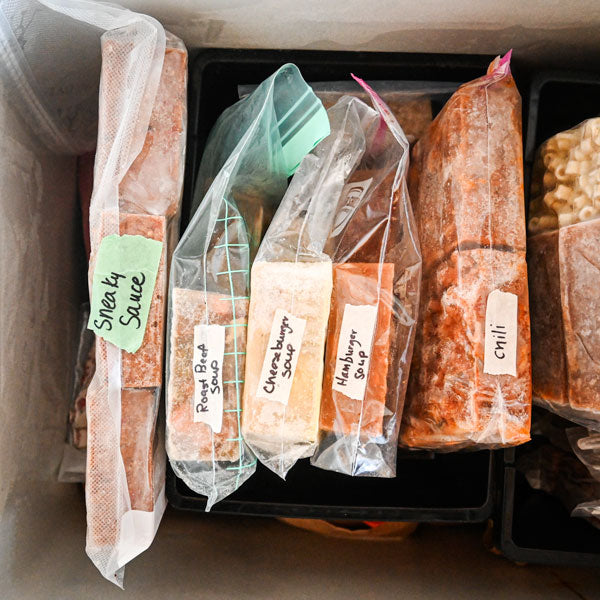
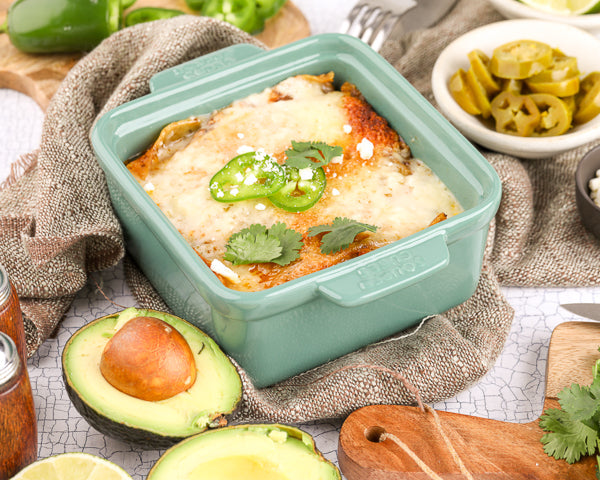
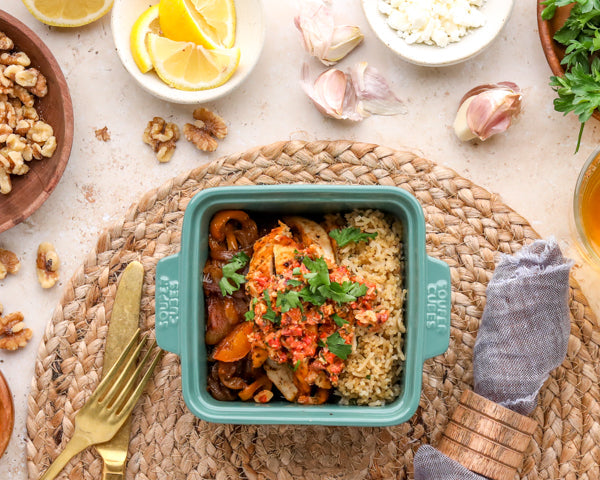
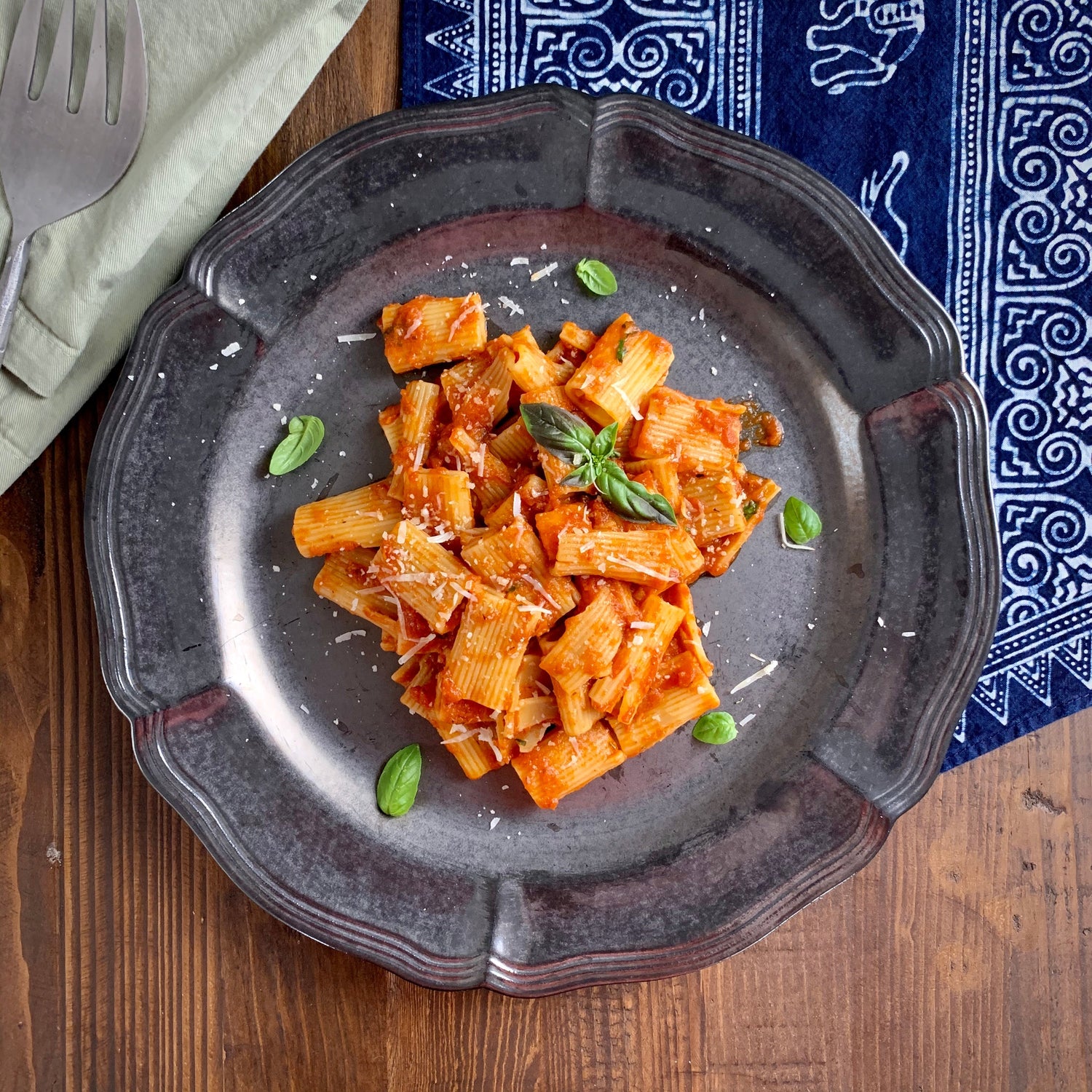

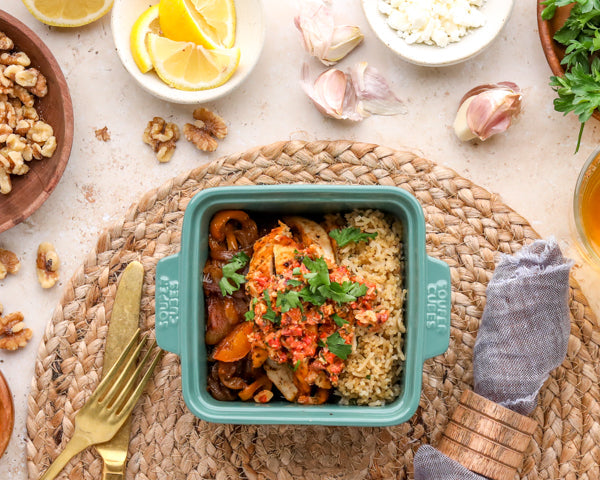
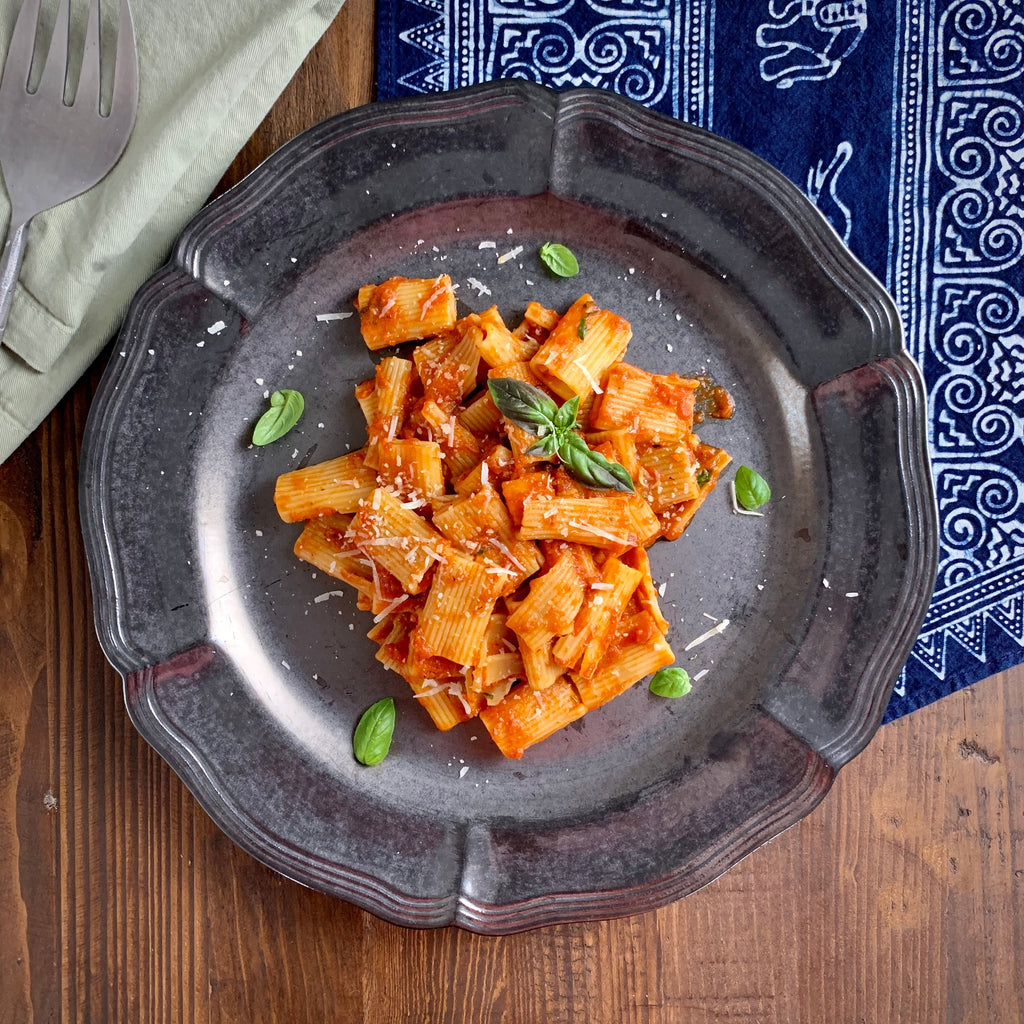
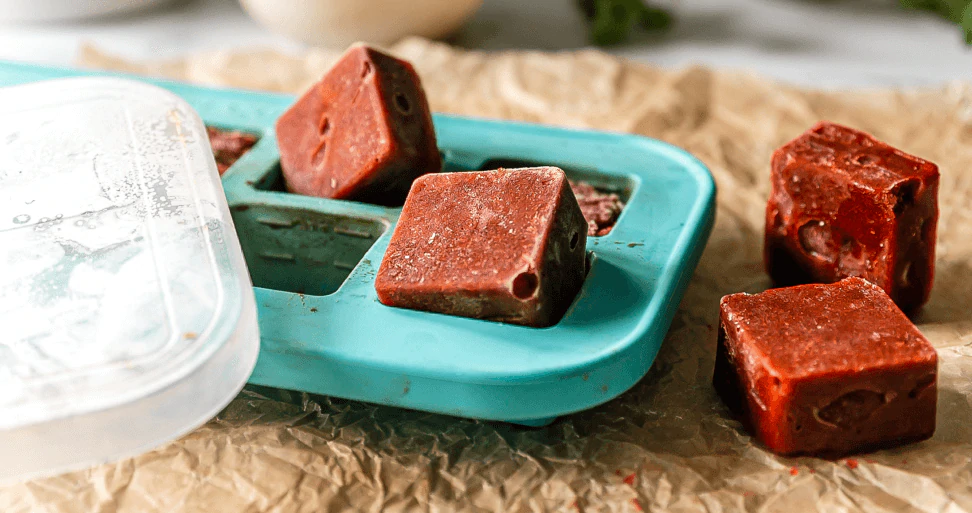

We would love to hear your ideas or better yet, post a photo of your cubes organized in our Freezer Meals & Recipes Facebook Group!